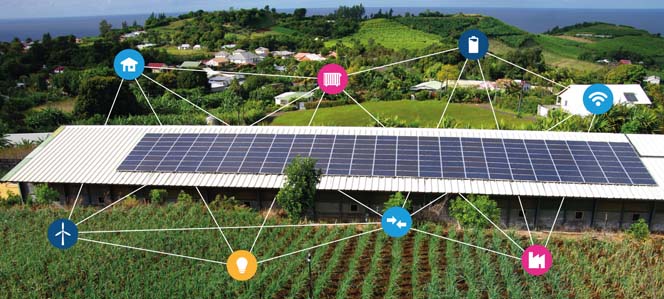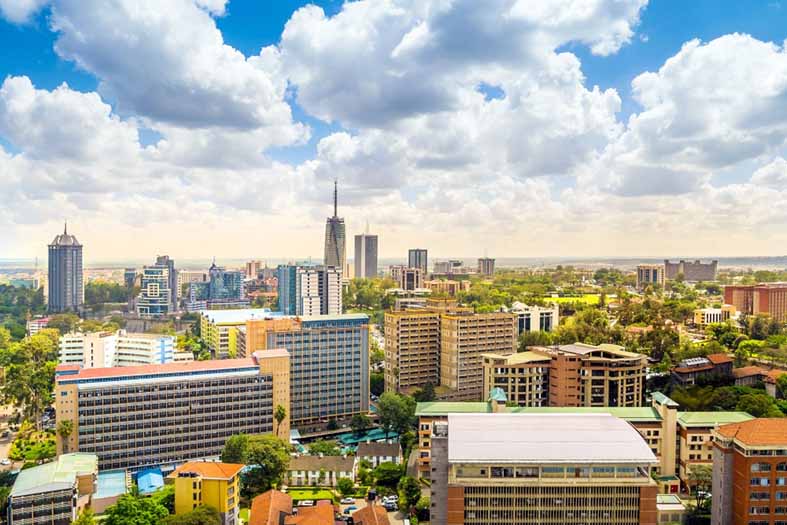A competitive micro grid system

https://www.philstar.com/business/2019/06/14/1926136/competitive-micro-grid-system
Hurricane Maria left many Puerto Ricans without electricity for months. The island’s power grid was badly damaged and hundreds of people died simply because they couldn’t keep their insulin refrigerated, or their oxygen machines running.
That led the Puerto Rico Electric Power Authority (PREPA) to look at microgrids to improve the resilience of the island to future hurricanes. They plan to use cutting-edge technology and revolutionize the traditional utility model.
Puerto Rico Governor Ricardo Rosselló endorsed the decentralized power generation model. “We want distributed generation. We want microgrids everywhere within the island. This is an opportunity to leapfrog into the future and create an Energy 2.0.”
Indeed, microgrids are the future of power distribution. Microgrids using renewable sources of energy like solar and wind are increasingly able to provide dependable power to communities at rates comparable to major grids.
For us, microgrids are also important to achieve 100 percent electrification at affordable rates for residents in unserved and underserved areas.
Sen. Sherwin Gatchalian, chair of the Senate Committee on Energy, said he filed Senate Bill 2218 precisely to encourage the installation of microgrid systems in isolated communities.
Sen. Gatchalian observed that “total electrification in unserved areas cannot be done by traditional grid extension alone and that non-traditional means — such as microgrid systems — are needed. The problem of energy access is also a concern even in“electrified” areas plagued by constant blackouts, or what we call underserved areas.”
What Sen. Gatchalian wants to do “is to allow proponents to put up microgrids. These microgrids will be self-sustaining, meaning they will produce as well as distribute power.”
That goes against the EPIRA principle of separating generators and distributors. But so what? EPIRA hasn’t helped bring electricity to isolated areas anyway.
The senator’s bill mandates the Department of Energy (DOE) to annually release and update the list of unserved and underserved areas for prospective microgrid service providers (MSPs). The bill eliminates bureaucratic red tape and delay by streamlining the process for MSPs with clear timelines and stiff sanctions.
The situation is dire and has been for so long. The senator pointed out that around 2,779,530 households, or 11.7 percent of the total number of households nationwide, still have no access to electricity.
He further noted that 83 out of the 171 areas serviced by the National Power Corp. – Small Power Utilities
Group received only four to eight hours of electricity service in 2018, while 34 areas received only nine to 16 hours of electricity service.
The young entrepreneur Leandro Leviste noted the service gap that had been left unattended by traditional electric coops and even private utilities. He had long wanted to go to unserved and underserved areas and provide them with electricity using solar energy plus Tesla batteries for nighttime use.
But coops have rejected his proposals even if the areas Leviste wanted to serve are not being served. That’s why he sought a congressional franchise that would allow him to set up solar microgrids.
The Leviste franchise has been approved by Congress and awaits the signature of President Duterte. But many sectors of the power industry, big and small, are up in arms as they claim the new franchise violates existing laws, including EPIRA.
I read the enrolled copy of the bill as approved by both houses of Congress and I note that it is a non-exclusive franchise to generate, supply, and distribute electric power using renewable energy technology in remote and unviable, unserved and underserved areas. Its coverage has also been limited to specific provinces and municipalities only.
The DOE was also tasked to determine remote and unviable, unserved or underserved areas. Leviste’s Solar Para sa Bayan is also required to secure from the Energy Regulation Commission (ERC), DOE and any other government agency the necessary certificates, permits and licenses for the construction and operation of its microgrids.
Furthermore, the service rate will be regulated by and subject to the approval of ERC. Leviste’s Solar Para sa Bayan is also not entitled to any government subsidy unlike many cooperatives.
The Leviste franchise also states that no waiver of rights from franchised distribution utilities is necessary to operate microgrids in remote and unviable, unserved, or underserved areas determined by DOE.
Some small solar power entrepreneurs who also want to do what Leviste wants to do are worried that they are now up against a competitor favored by a franchise. They sought me out and I listened to their concerns.
I cited Section 13 of the Leviste franchise regarding competition. Other qualified third parties (QTP) shall be able to participate in any competitive selection process even without a similar franchise from Congress.
But they said that is not enough. Getting accredited as a qualified third party able to compete with Leviste takes time. They said the process at the DOE to get this accreditation can take as long as five years. In the meantime, they said, Leviste would enjoy a monopoly.
If that’s the fear, the solution is getting DOE and other government agencies to cut the accreditation red tape. Indeed, I see no reason why other entities willing and able to compete with Leviste should be deprived of the opportunity to do that. The Leviste franchise says they can compete with Leviste even without a similar franchise.
Perhaps, the bill of Sen. Gatchalian can clarify the competitive situation better. But let us keep our focus on the objective of expanding electric services to every part of the country. Whoever can get it done fast should be helped.
I can understand why some of the big guys are up in arms. They feel threatened. They can see a glimmer of the future which is microgrid and using renewable energy, not coal, not natural gas and definitely not fuel oil or diesel.
I like the disruption caused by the young Leviste. Such disruptions are always welcome on the road to progress.


